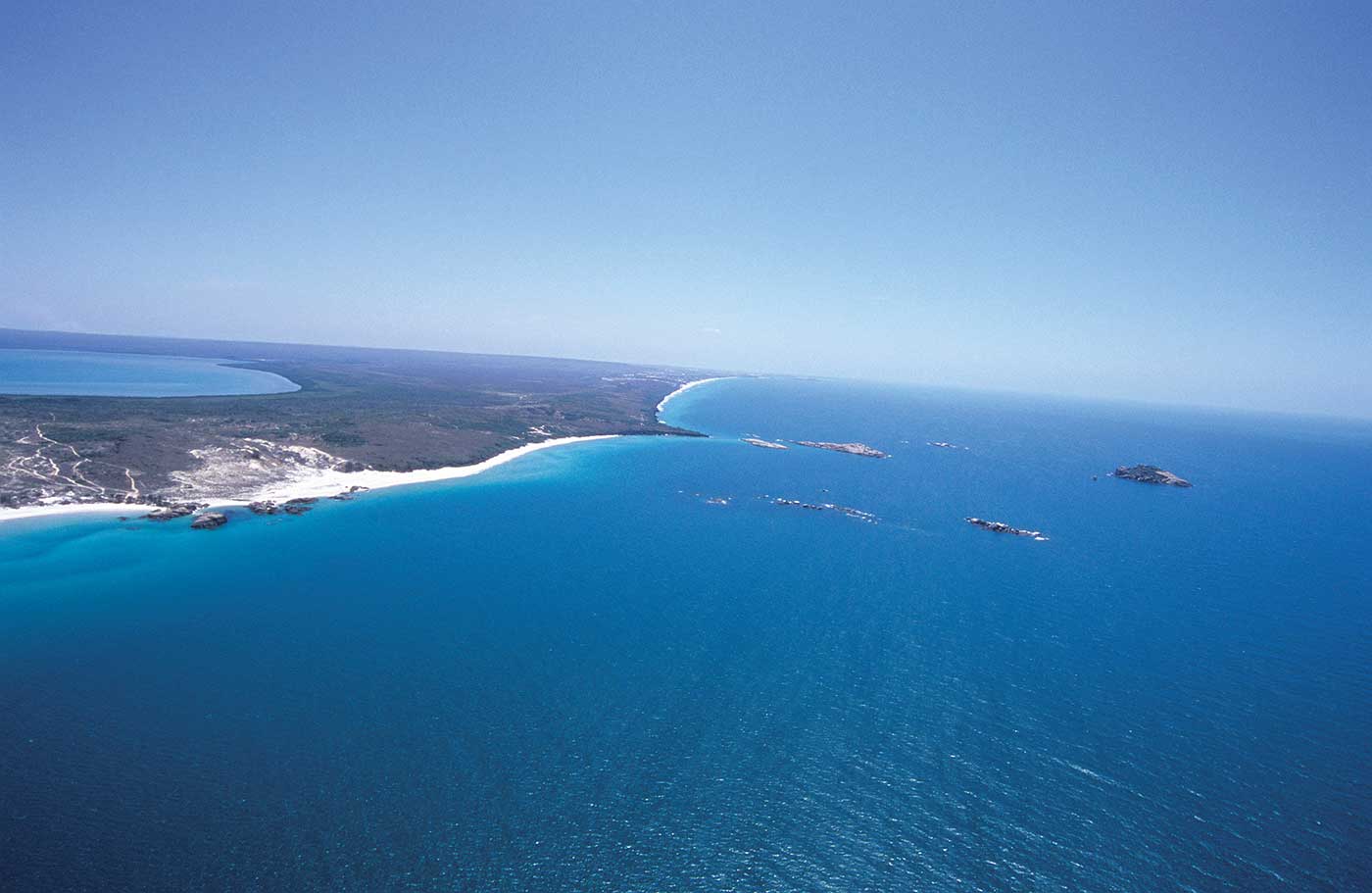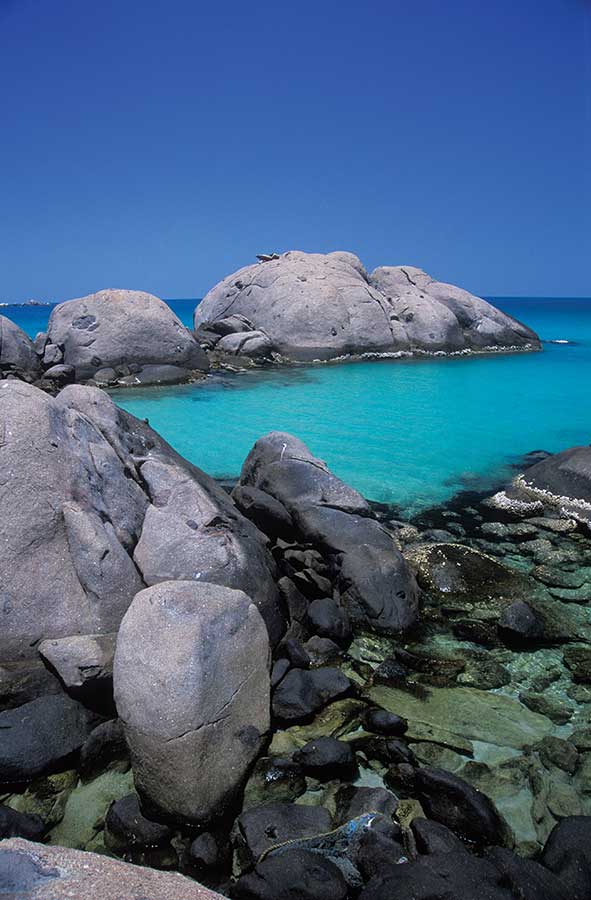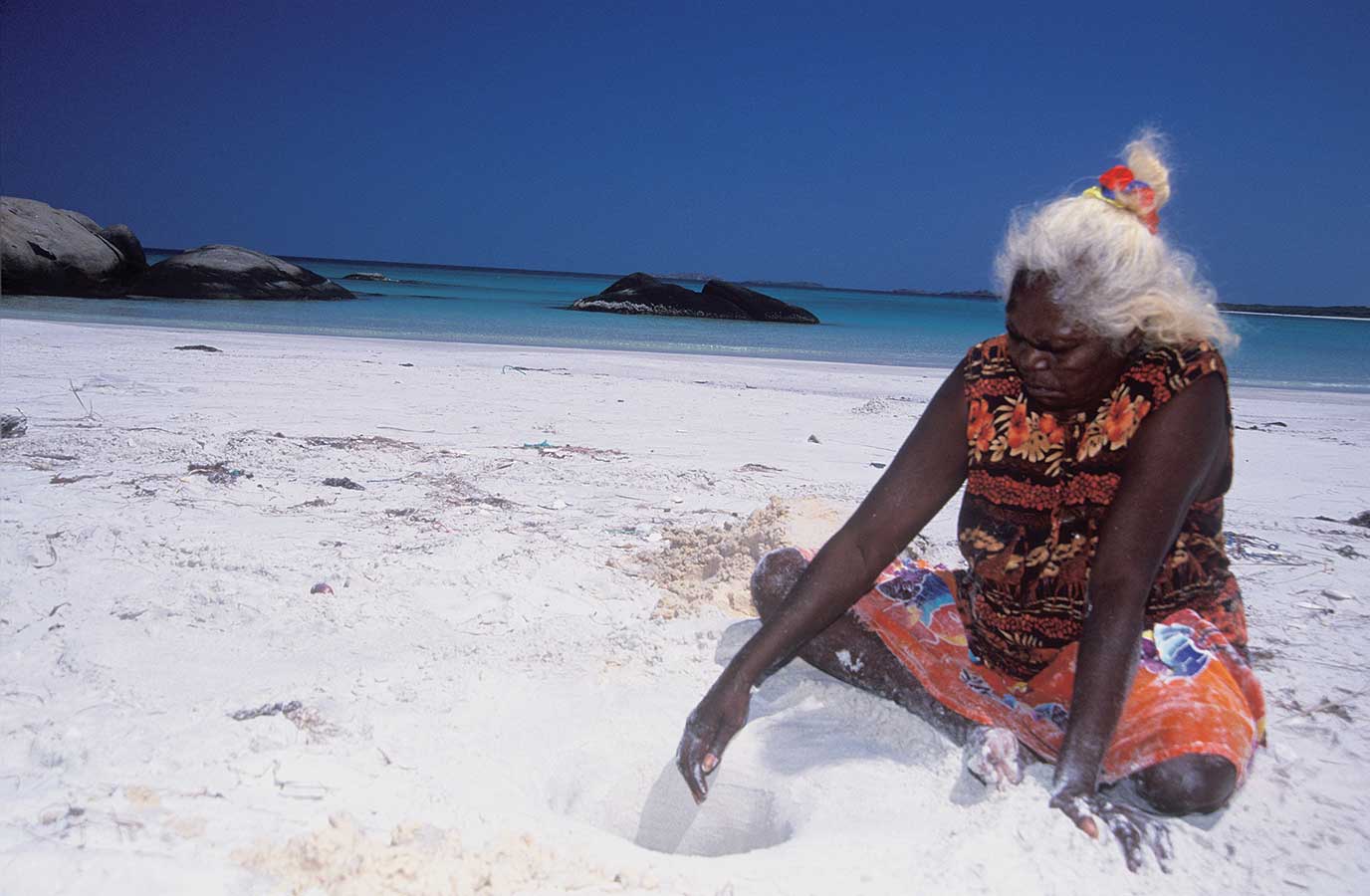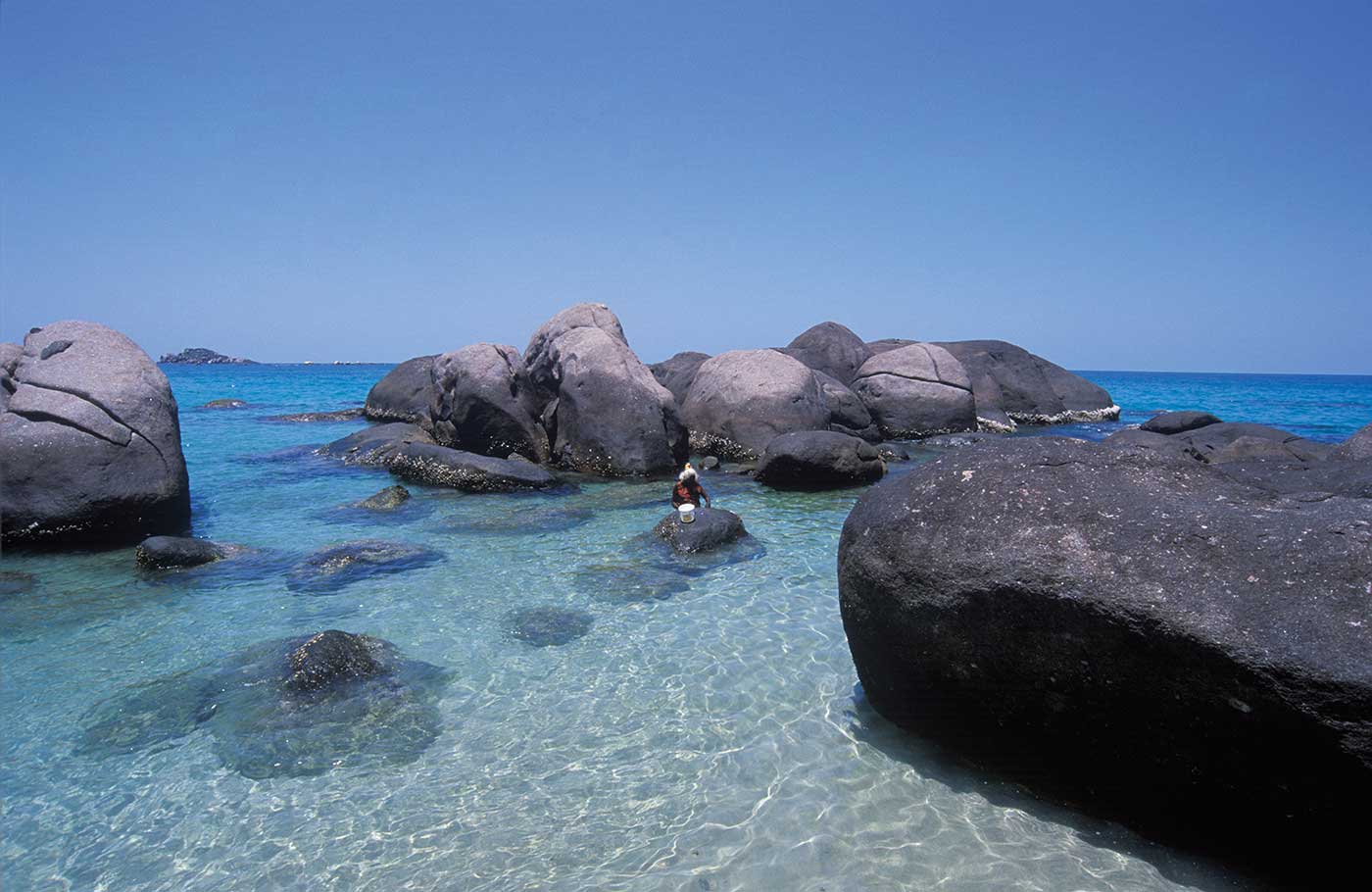Bakamumu Marika, 2004:
Yalangbara is a very important place. It means the beginning of life because that's where the Rirratjingu generations started ... that's where the Djang'kawu women were and that's where the families were born. They are the sunrise; they are the life.
Yalangbara is the most culturally significant of the Marika's 3 separate clan estates. The yaku bathala (big name) of Yalangbara was bestowed by the Djang'kawu upon the greater Port Bradshaw region, including the eastern peninsula, Laluway Bay and adjacent coast.
The name also has a number of different applications depending upon context. It can refer to a smaller beach site close to where the Djang'kawu first landed, as well as to the entire eastern or miwiyul (sunrise) side of the peninsula that is separated from the western or gulngu (sheltered) side by a massive dune system.
While the Yalangbara region belongs collectively to the Rirratjingu, two separate branches of the family have special custodial responsibilities for these respective eastern and western sides of the peninsula.
The main access to Yalangbara, or Port Bradshaw, is by a rough bush track leading 22 kilometres south from the Aboriginal township of Yirrkala in the Miwatj, or north-east Arnhem Land region.
The Yalangbara area covers around 210 square kilometres of land and coastal waters, with spectacularly beautiful white sand beaches, crystal clear seas and dramatically-shaped offshore granite islands and beach outcrops.
A dominant feature of the eastern coastline are the sand dunes ranging from 20-metres, upwards of 80-metres, high that effectively bisect the Yalangbara peninsula.
Another important feature is the subterranean groundwater which comprises the area's main source of fresh water. Its existence (along with many of the geographical features and natural species) is attributed to the Djang'kawu who created freshwater wells by digging through the ground with their digging sticks. When people camp at Yalangbara today they simply dig a well in the sand to obtain sweet drinking water.
The region also sustains a wide variety of plants and animals that are highly valued by the Marikas who spend a lot of time at Yalangbara hunting and gathering. The clear, sheltered waters provide an exceptionally rich habitat for numerous species of fish, rays, shellfish, crustaceans, trepang (beche-de-mer) and saltwater crocodiles.
There are also a significant number of seabirds in this area, including internationally significant populations of Bridle and Roseate terns. To date 18 threatened species have been recorded from the area, including 3 plant, 14 vertebrate and one butterfly species.
Because of its relatively pristine nature, Yalangbara is environmentally important for the wider north-east Arnhem region. The Marikas simply refer to it as their paradise.
You may also like



